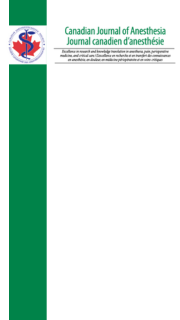
Continuous Interscalene vs. High Thoracic Erector Spinae Block in Total Shoulder Arthroplasty

Continuous Interscalene vs. High Thoracic Erector Spinae Block in Total Shoulder Arthroplasty
Continuous interscalene versus phrenic nerve-sparing high-thoracic erector spinae plane block for total shoulder arthroplasty: a randomized controlled trial
Can J Anaesth. 2022 01-May;():. 10.1007/s12630-022-02216-1Synopsis
Thirty patients undergoing total shoulder arthroplasty were randomized to receive a continuous interscalene brachial plexus block (n=15) or a high-thoracic erector spinae plane block (n=15) for the control of post-operative shoulder pain. The primary outcome of interest was the incidence of hemidiaphragmatic paralysis. Additional outcomes of interest included incentive spirometry volume, sensory a...
To view the full content, login to your account,
or start your 30-day FREE Trial today.
FREE TRIAL
LOGIN
Forgot Password?
Explore some of our unlocked ACE Reports below!

Learn about our AI Driven
High Impact Search Feature
Our AI driven High Impact metric calculates the impact an article will have by considering both the publishing journal and the content of the article itself. Built using the latest advances in natural language processing, OE High Impact predicts an article’s future number of citations better than impact factor alone.
Continue



 LOGIN
LOGIN

Join the Conversation
Please Login or Join to leave comments.